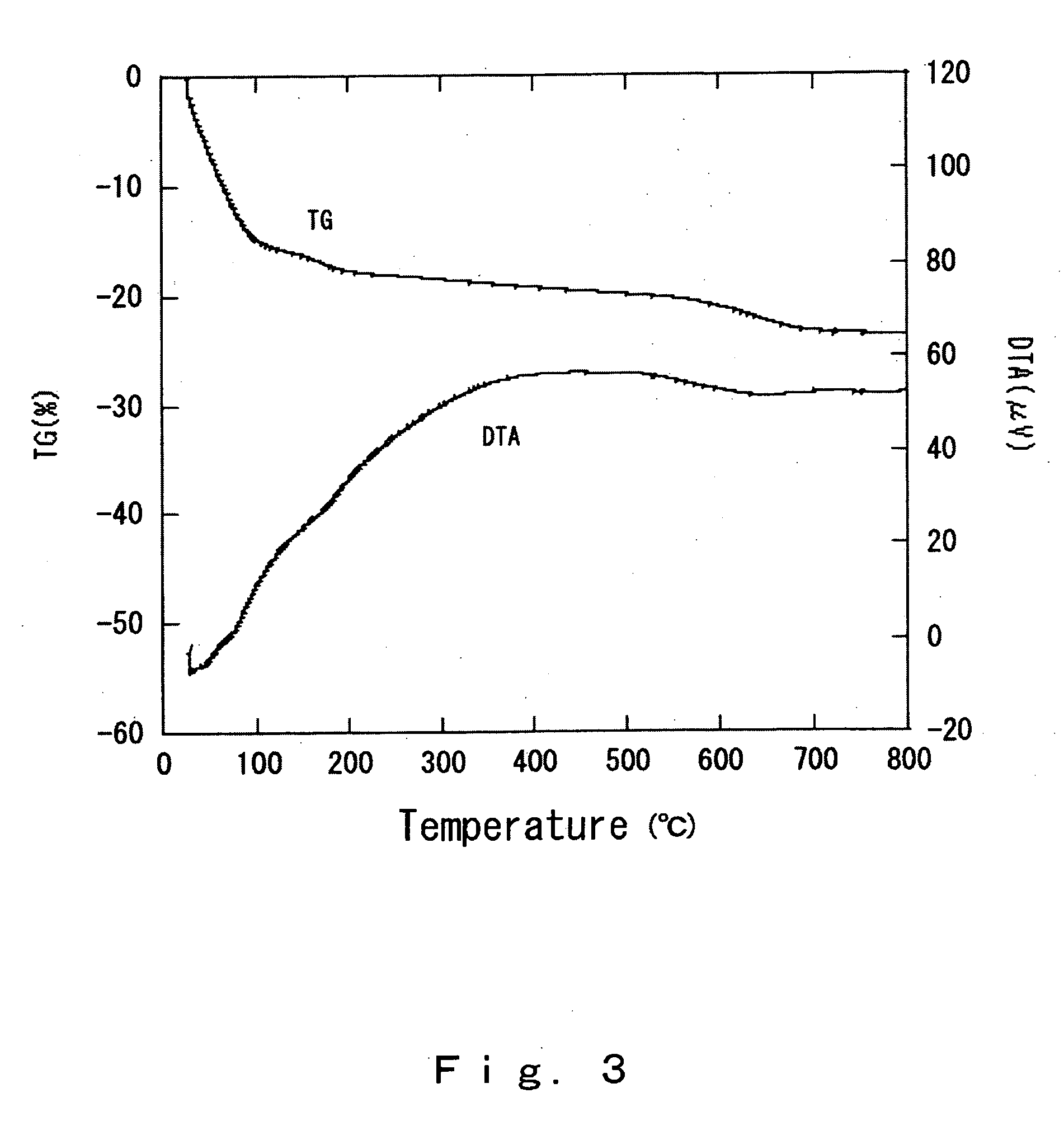Clay film
a technology of aluminum film and film body, applied in the field of film body, can solve the problems of low heat resistance of materials, aluminum film does not offer high gas barrier performance, metal gaskets are not as flexible as those made from organic polymer materials, etc., and achieves the effects of increasing production efficiency, increasing production speed and production efficiency, and ensuring the effect of heat resistan
- Summary
- Abstract
- Description
- Claims
- Application Information
AI Technical Summary
Benefits of technology
Problems solved by technology
Method used
Image
Examples
example 1
[0097] 60 cc of distilled water was added to 1.0 g of Kunipia P (as the clay; a natural montmorillonite made by Kunimine Industries), and this was put into a sealed plastic vessel along with a Teflon® agitator and shaken vigorously, which gave a uniform dispersion. This clay dispersion was poured into a flat-bottomed polypropylene tray that had a square bottom measuring about 10 cm on each side, and the clay dispersion was allowed to stand horizontally so that the clay particles would gradually settle. With the tray held horizontal, the dispersion was dried for 5 hours at a temperature of 50° C. in a forced air oven, which gave a semi-transparent clay thin film with a thickness of approximately 40 μm.
[0098]FIG. 1 shows a scanning electron micrograph of this clay thin film. It can be seen in FIG. 1 that the layers of clay particles are highly oriented. FIG. 2 is an X-ray diffraction chart of this clay thin film. A series of sharp back reflection peaks (001), (002), (003), (004), and...
example 2
[0099] 60 cc of distilled water was added to magnesium Kunipia P (as the clay), obtained by exchanging the exchangeable ions of 1.0 g of Kunipia P (a natural montmorillonite made by Kunimine Industries) with magnesium, and this was put into a sealed plastic vessel along with a Teflon® agitator and shaken vigorously, which gave a clay dispersion. This clay dispersion was poured into a flat-bottomed polypropylene tray that had a square bottom measuring about 10 cm on each side, and the clay dispersion was allowed to stand horizontally so that the clay particles would gradually settle. With the tray held horizontal, the dispersion was dried for 5 hours at a temperature of 50° C. in a forced air oven, which gave a semi-transparent clay thin film with a thickness of approximately 70 μm.
[0100] The clay thin film thus produced was dried in an oven held at 110° C., which allowed the film to be easily peeled from the tray. The water permeation coefficient of this clay thin film (magnesium K...
example 3
[0101] 60 cc of distilled water was added to 1.0 g of Smectone (as the clay; a synthetic saponite made by Kunimine Industries), and this was put into a sealed plastic vessel along with a Teflon® agitator and shaken vigorously, which gave a uniform dispersion. This clay dispersion was poured into a flat-bottomed polypropylene tray that had a square bottom measuring about 10 cm on each side, and the clay dispersion was allowed to stand horizontally so that the clay particles would gradually settle. With the tray held horizontal, the dispersion was dried for 5 hours at a temperature of 50° C. in a forced air oven, which gave a semi-transparent clay thin film with a thickness of approximately 70 μm. The clay thin film thus produced was dried in an oven held at 110° C., which allowed the film to be easily peeled from the tray. The water permeation coefficient of this clay thin film was measured and found to be 2×10−10 cm / sec, and high water blocking was exhibited.
PUM
| Property | Measurement | Unit |
|---|---|---|
| surface area | aaaaa | aaaaa |
| thickness | aaaaa | aaaaa |
| temperature | aaaaa | aaaaa |
Abstract
Description
Claims
Application Information
 Login to View More
Login to View More - R&D
- Intellectual Property
- Life Sciences
- Materials
- Tech Scout
- Unparalleled Data Quality
- Higher Quality Content
- 60% Fewer Hallucinations
Browse by: Latest US Patents, China's latest patents, Technical Efficacy Thesaurus, Application Domain, Technology Topic, Popular Technical Reports.
© 2025 PatSnap. All rights reserved.Legal|Privacy policy|Modern Slavery Act Transparency Statement|Sitemap|About US| Contact US: help@patsnap.com



